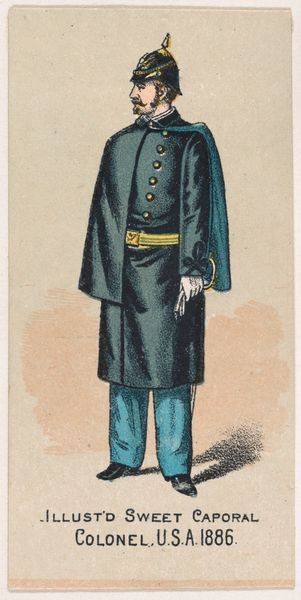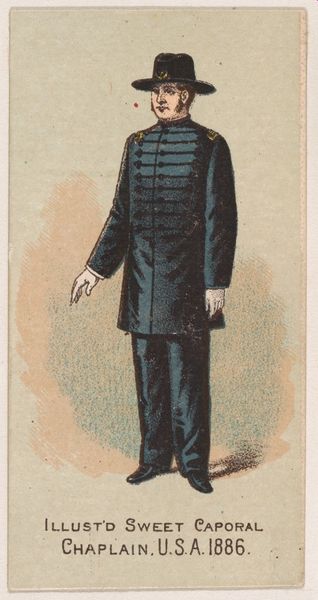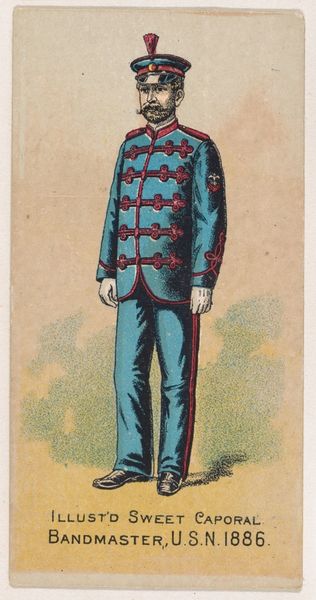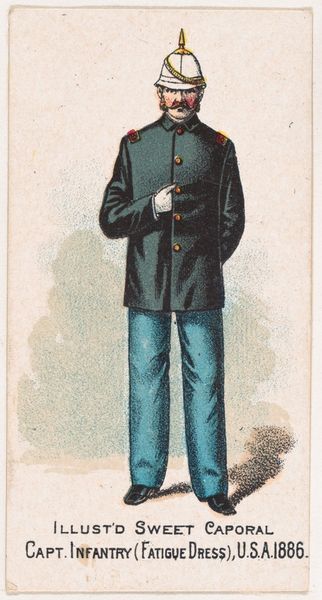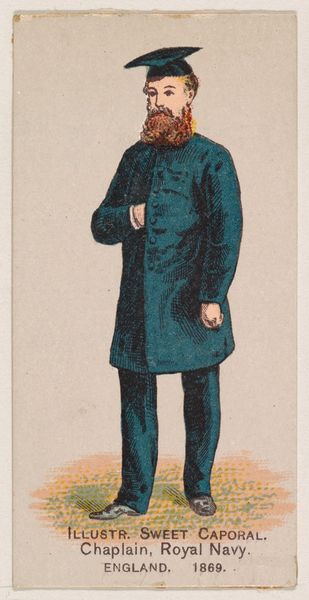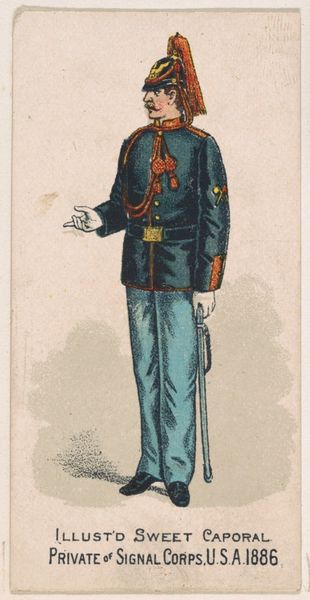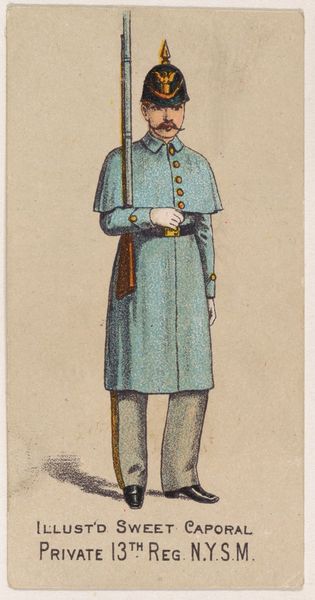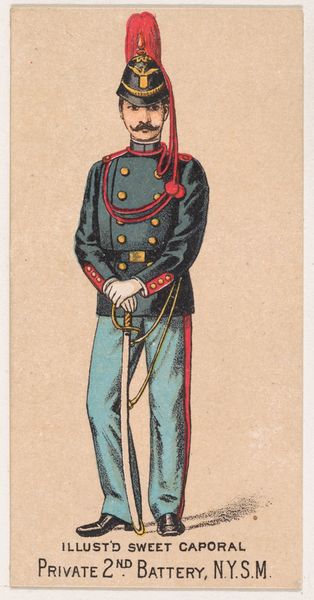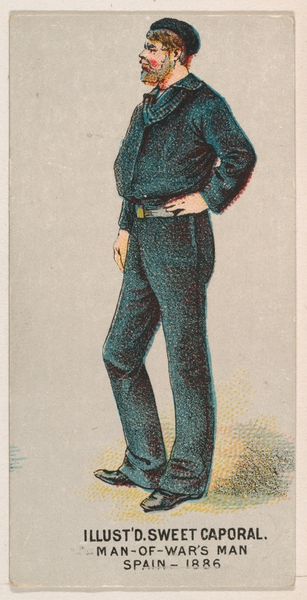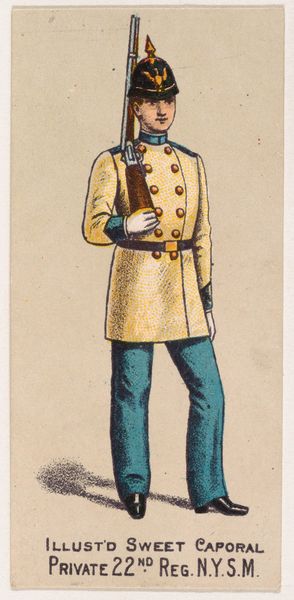
Private of Engineers, United States Army, 1886, from the Military Series (N224) issued by Kinney Tobacco Company to promote Sweet Caporal Cigarettes 1888
0:00
0:00
drawing, print
#
portrait
#
drawing
# print
#
caricature
#
caricature
#
figuration
#
history-painting
#
watercolor
Dimensions: Sheet: 2 3/4 × 1 1/2 in. (7 × 3.8 cm)
Copyright: Public Domain
Curator: Here we have a curious lithograph, dating from 1888, "Private of Engineers, United States Army, 1886, from the Military Series" by the Kinney Brothers Tobacco Company. Editor: There’s something almost wistful about it, the lone figure standing so rigidly. The pale colors feel muted, yet strangely stark. It reminds me of the formal, rigid posture they use in many official portraits. Curator: Indeed, it’s a very economical use of line and color. Observe how the artist captures the essence of the uniform with just a few deliberate strokes, how the silhouette is emphasized over minute detail. The reduction almost becomes a form of sign, efficiently representing "soldier". Editor: Yes, but look closer at the historical context. This card was part of a promotional series by a tobacco company. How were soldiers depicted in popular culture then? And, of course, what role might this have played in shaping public perception of the military and the nation's image after the Civil War? It might have functioned as both patriotic propaganda and a capitalist marketing tactic. Curator: A point well taken. The chromolithography technique, creating vibrant images economically, was integral to mass media at this time. Yet consider, even in its reproductive nature, how certain design choices impact the way a military presence is received and, importantly, consumed. The lines and color palettes are consciously deployed. Editor: I'm particularly interested in unpacking the military's intersectional narratives in this artwork. Is there some suggestion about class and race with this portrayal? Are there assumptions around ideas of masculinity and power that may resonate to present viewers and reflect cultural values back then? Curator: Those are insightful observations, considering the piece beyond pure aesthetics and toward how images disseminate power structures and narratives. This allows us to comprehend and even problematize the formal elements of such a commonplace print. Editor: Right, and analyzing this from the view of political power lets us rethink visual economy by interrogating themes in historical context. Curator: Yes, there are multiple viewpoints, and, perhaps, each lens gives viewers a deeper insight into the confluence of industry, art, and social history.
Comments
No comments
Be the first to comment and join the conversation on the ultimate creative platform.
